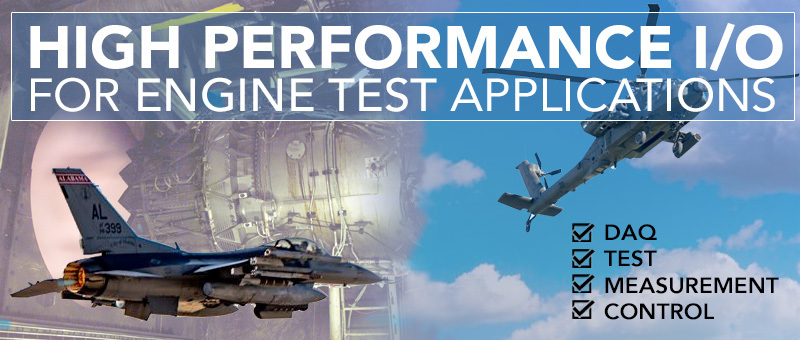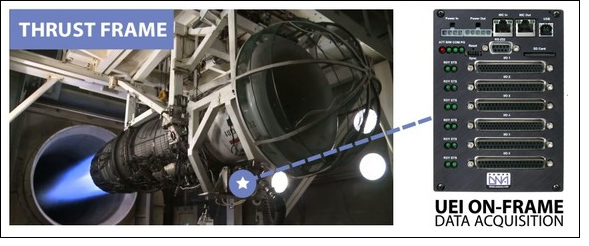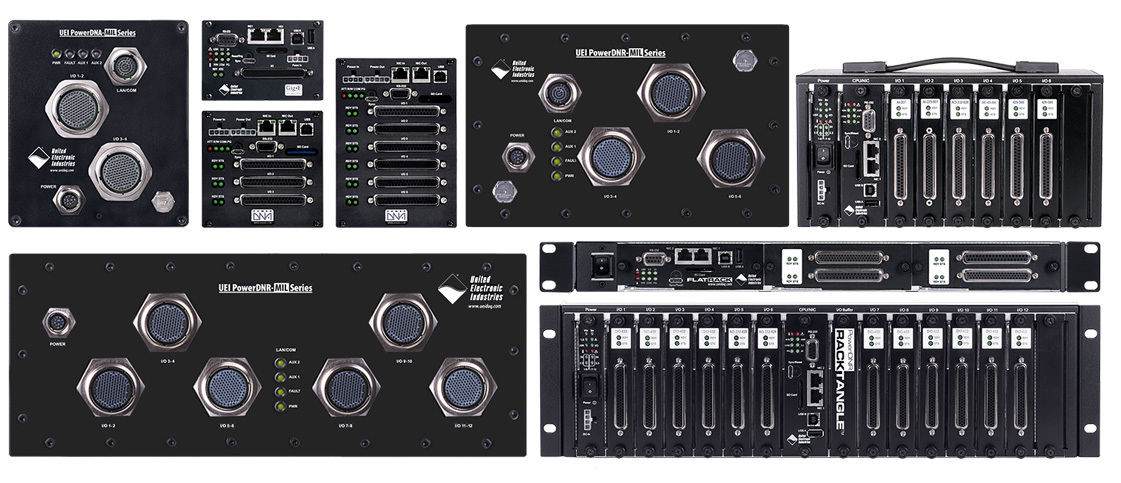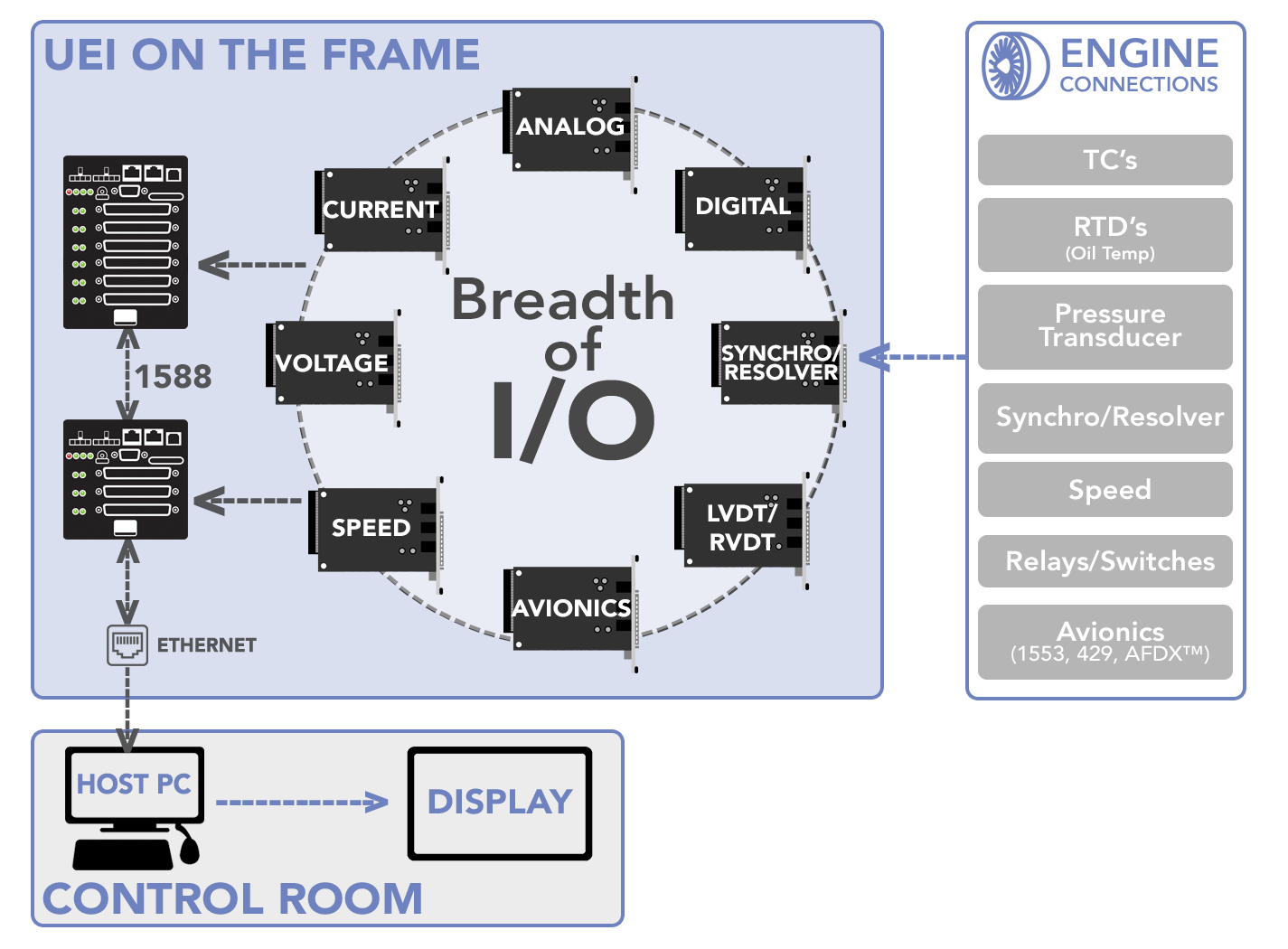PowerDNA Hardware at Tinker Air Force Base
PowerDNA hardware helps Tinker US Air Force Base achieve design Goals for its new engine test cell. PowerDNA Hardware at Tinker Air Force Base.
General
(508) 921-4600
Email Sales
Email Support
UEI Europe Office
+49 40 63698136
Email EU Sales
Visit this page for local offices and distributors.

|
|
UEI’s systems are perfect for many types of engine test applications. Whether you are collecting dynamic high-speed data monitoring vibration or lower-speed monitoring of temperature and strain, UEI has your application solution covered. Control your FADEC with ARINC-429 or MIL-STD-1553 to ensure your signals and sensors are valid. When you need to collect your signals accurately, you can rely on UEI!
The United States Air Force (USAF) relies on UEI for rugged hardware for use in the Pacer Comet IV Engine Test Cell. UEI hardware and I/O is used on the following engine testing systems:

Download UEI's Pacer Comet IV application story here.


UEI has boards to collect:
The Pacer Comet IV represents a major step forward in Test Cell Design and has set the standard for efficient, high performance jet engine testing. Watch and learn how UEI is played a role in its success.
UEI key benefits included:
UEI can help support Hardware-in-the-loop (HIL) in your control, test, and monitoring applications.